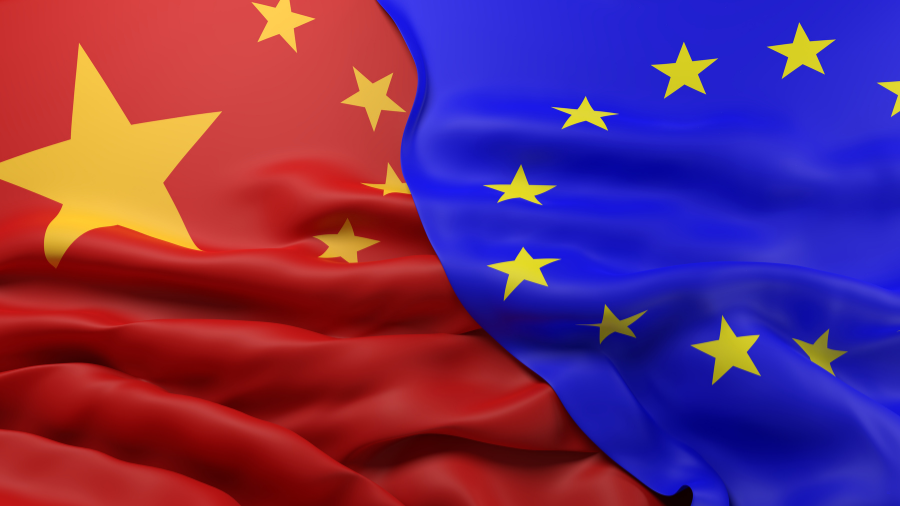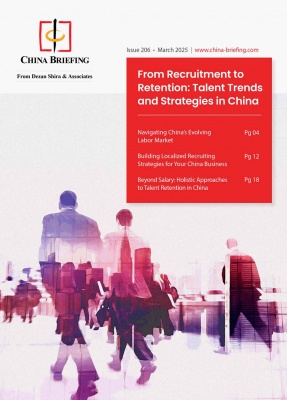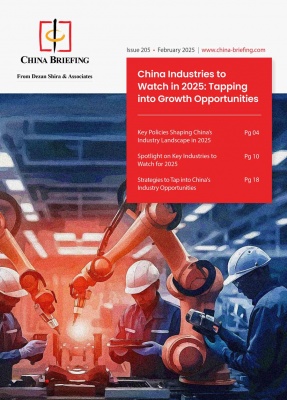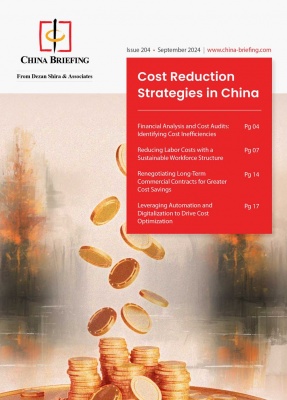China–Uruguay Economic Relations: Growth Trends & Strategic Sectors
China-Uruguay economic relations are gaining renewed momentum, supported by strong trade growth and expanding investment cooperation across key sectors. Uruguay’s agricultural exports, clean energy leadership, and strategic location within MERCOSUR make it an increasingly attractive partner for Chinese enterprises. As both countries pursue deeper collaboration under the Belt and Road Initiative, new opportunities are emerging in infrastructure, fintech, and sustainable development.
China and Uruguay established diplomatic relations in 1988, and since then, bilateral ties have steadily strengthened across political, economic, and cultural dimensions. A major milestone was reached in 2016 when the two countries upgraded their relationship to a strategic partnership during the visit of then-President Tabaré Vázquez to China. In 2018, Uruguay became the first member of MERCOSUR (Southern Common Market) to sign a Memorandum of Understanding with China under the Belt and Road Initiative (BRI), further deepening strategic connectivity between Asia and Latin America.
In recent years, China has become Uruguay’s largest trading partner, biggest export destination, and the top buyer of its major agricultural exports—including pulp, soybeans, and beef. Despite external challenges, such as the extreme drought in 2023, bilateral trade between the two countries has remained resilient. According to Uruguay XXI, total trade between China and Uruguay reached approximately US$7.5 billion in 2023, with China importing more than US$2.6 billion worth of beef and agricultural products, underscoring the importance of Uruguay in supporting China’s food security needs.
This increasingly robust partnership reflects broader trends in global trade realignment. As multinationals diversify their supply chains and prioritize resilience and sustainability, Uruguay’s stable political climate, liberal trade regime, and strong agritech capacity position it as a valuable partner for Chinese enterprises. The two sides are expected to expand cooperation further in clean energy, digital infrastructure, and smart agriculture, paving the way for high-value collaboration in emerging sectors.
[port-ads country = “china”]
Bilateral trade relations between China and Uruguay
In 2024, the total bilateral trade volume between China and Uruguay reached US$6.59 billion, marking a 25 percent increase compared to 2023. This growth follows a contraction in 2023 and highlights the ongoing resilience and recovery of trade ties between the two nations. China’s exports to Uruguay amounted to US$3.27 billion—a 12.0 percent year-on-year increase—while imports from Uruguay rose sharply by 41.28 percent, totaling US$3.32 billion. These figures indicate a balanced trade relationship, with Uruguay recording a modest trade surplus of US$50 million for the year.
As a key agricultural exporter in South America, Uruguay continues to play a vital role in China’s efforts to diversify its global supply chains and secure stable, high-quality imports of essential goods. Despite Uruguay’s relatively small market size, it remains a strategically important supplier of raw materials and food products.
| China-Uruguay Bilateral Trade (2019-2024) | ||||||
| Year | Total trade | China exports (US$, billion) | China imports (US$, billion) | YoY change (%) | China exports change (%) | China imports change (%) |
| 2019 | 4.92 | 1.95 | 2.98 | 6.4 | -5.6 | -10.2 |
| 2020 | 4.07 | 1.70 | 2.37 | -17.0 | -12.6 | -20 |
| 2021 | 6.43 | 2.81 | 3.62 | 58.0 | 65.3 | 52.7 |
| 2022 | 7.44 | 2.94 | 4.46 | 15.1 | 4.6 | 23.2 |
| 2023 | 5.27 | 2.97 | 2.33 | -28.4 | 1.0 | -47.8 |
| 2024 | 6.59 | 3.27 | 3.32 | 25 | 12.0 | 41.4 |
Source: International Trade Centre, General Administration of Customs, China (GACC)
China’s exports to Uruguay in 2024 were primarily composed of manufactured and industrial goods, with the top categories being machinery and mechanical appliances, electrical machinery and equipment, vehicles and related parts, plastics and articles thereof, and toys, games, and sports requisites.
| Top Chinese Exports to Uruguay in 2024 | |
| Category | Value (US$, million) |
| Nuclear reactors, boilers, machinery, and mechanical appliances; parts thereof | 538.27 |
| Electrical machinery and equipment and parts thereof; sound recorders and reproducers, television image and sound recorders and reproducers, and parts and accessories of such articles | 498.65 |
| Vehicles other than railway or tramway rolling stock and parts and accessories thereof | 438.52 |
| Plastics and articles thereof | 216.34 |
| Toys, games, and sports requisites; parts and accessories thereof | 137.24 |
Source: International Trade Centre
These products reflect China’s strengths in advanced manufacturing and consumer goods, catering to Uruguay’s growing demand for infrastructure, transportation, and lifestyle improvements.
On the other side, Uruguay’s exports to China are heavily concentrated in the agricultural and resource sectors, underscoring its role as a reliable food and raw materials supplier. The top categories include wood pulp and cellulose-related products, oilseeds and soybeans, meat (primarily beef), wood and wood products, and wool and related fibers.
|
Top China Imports from Uruguay in 2024 |
|
| Category | Value (US$, million) |
| Pulp of wood or of other fibrous cellulosic material; recovered (waste and scrap) paper or paperboard | 1,057.76 |
| Oil seeds and oleaginous fruits; miscellaneous grains, seeds, and fruit; industrial or medicinal plants; straw and fodder | 1,034.47 |
| Meat and edible meat offal | 892.82 |
| Wood and articles of wood; wood charcoal | 72.15 |
| Wool, fine or coarse animal hair; horsehair yarn and woven fabric | 69.29 |
Source: International Trade Centre
While China has traditionally maintained a trade surplus with Uruguay, 2024 marked a rare reversal, with Uruguay posting a narrow surplus. This shift was driven primarily by a rebound in China’s imports of agricultural commodities after a sharp decline in 2023. The improved trade balance also reflects growing structural complementarity between the two economies—China’s need for natural resources and agricultural inputs aligns well with Uruguay’s export capabilities.
Moving forward, bilateral trade is expected to deepen as China continues to emphasize supply chain resilience and food security under its dual circulation strategy.
China’s investment in Uruguay
While still at a relatively early stage, Chinese investment in Uruguay has steadily expanded in recent years, driven by deepening bilateral ties and Uruguay’s open investment policies. Following the establishment of a comprehensive strategic partnership in 2023, China and Uruguay have increasingly explored synergies in infrastructure, clean energy, agriculture, and technology sectors. Although the number of Chinese enterprises operating in Uruguay remains modest, the two countries’ complementary strengths—in resources, capital, and technological know-how—provide fertile ground for future collaboration.
According to the Ministry of Commerce of China, by the end of 2023, China’s accumulated direct investment in Uruguay reached US$214 million.
Currently, several Chinese enterprises operate in Uruguay, including:
- China Machinery Engineering Corporation (CMEC)
- COSCO Shipping Lines (transportation and logistics)
- Shanghai Dredging Company (dredging)
- Huawei Technologies (communication equipment and technology)
- ZTE Corporation (communication equipment and technology)
- BGI Health (genetic testing)
- ExCell Bio (fetal bovine serum)
- Anhui Heli Co., Ltd. (forklift machinery)
In May 2021, CMEC signed a contract with Uruguay’s National Power Company for the China-Uruguay 500kV transmission and transformation ring network closure project. This project is the largest infrastructure project awarded to a Chinese enterprise in Uruguay since the establishment of diplomatic relations between the two countries and the first large-scale bilateral turnkey project under the Belt and Road Initiative, which holds significant importance for deepening the strategic partnership between China and Uruguay.
Uruguay’s attractiveness as an investment destination
Uruguay, located in the southeastern part of South America, benefits from its strategic geographical position along the eastern banks of the Uruguay River and the Río de la Plata, bordered by Brazil to the north, Argentina to the west, and the Atlantic Ocean to the southeast. This advantageous location, coupled with its natural deep-water ports, provides favorable conditions for attracting foreign investment and expanding international economic cooperation.
In recent years, Uruguay’s economy has remained stable with a low growth rate. The government has been committed to improving the domestic investment environment, stabilizing financial order, optimizing industrial structure, and actively engaging in international trade and economic cooperation, achieving notable results.
To attract more foreign investment, Uruguay has implemented a series of preferential policies, including favorable tax policies, relaxed foreign exchange controls, and the establishment of free trade zones. The Investment Law enacted in 1974 provides a legal basis for attracting foreign investment. In 1998, Uruguay passed Law No. 16906 (the Promotion and Protection of National and Foreign Investment Law), which further established national treatment for foreign investment, exemption from registration and approval, legal stability, third-party arbitration, and free exchange measures.
To address domestic funding shortages and employment issues, the Uruguayan government has intensified efforts to attract foreign investment, welcoming foreign enterprises to invest in sectors such as transportation, ports, timber processing, dairy processing, clean energy, agricultural resource development, and export processing.
According to the World Economic Forum’s 2019 Global Competitiveness Report, Uruguay ranked 54th among the 141 most competitive countries and regions globally. The World Bank’s 2020 Doing Business Report ranked Uruguay 101st out of 190 countries and regions worldwide.
Future opportunities
- Agriculture and food processing: Given Uruguay’s established position in China’s agri-import portfolio, Chinese investors are growing interested in securing long-term agricultural supply chains. Opportunities exist in grain storage, meat processing, and sustainable livestock management. Investment in agritech and traceable supply systems could further strengthen food security cooperation.
- Renewable energy: Uruguay is a regional leader in clean energy, with 5 percent of its electricity generation in 2023 coming from renewable sources—primarily wind, hydro, and biomass. Chinese companies with experience in solar, wind farm construction, and green hydrogen have a unique opportunity to participate in large-scale projects, such as the US$6 billion green hydrogen facility planned in Paysandú.
- Logistics and infrastructure: Uruguay’s ports—especially Montevideo and Nueva Palmira—are undergoing expansion to accommodate growing trade volumes. China’s expertise in port construction, railway upgrades, and infrastructure finance is well positioned to contribute to these developments. Notably, Uruguay’s central railway corridor was recently upgraded to support pulp transportation and future freight capacity.
- Telecoms and digital infrastructure: Uruguay has one of Latin America’s most advanced telecom sectors and was the first in the region to achieve 100 percent digitalization. With the rising demand for 5G, cloud computing, and smart infrastructure, Chinese tech firms are already active in telecom development and could deepen their presence through strategic partnerships and investment.
Key bilateral agreements and cooperation frameworks
Belt and Road Initiative (BRI)
Uruguay joined China’s Belt and Road Initiative (BRI) in 2018, becoming the first MERCOSUR country to do so. The cooperation framework emphasizes connectivity in infrastructure, trade facilitation, sustainable development, and people-to-people exchange. Under the BRI umbrella, China and Uruguay have strengthened collaboration in renewable energy, transportation infrastructure, and digital technology, aligning with Uruguay’s national development goals and green economy priorities.
Bilateral investment treaty (BIT)
China and Uruguay signed the Agreement on the Promotion and Protection of Investments in December 1993, which came into effect in September 1994. The treaty offers a solid legal foundation to protect investors’ rights and ensure fair treatment, boosting confidence for long-term Chinese investment in Uruguay and vice versa.
Double taxation avoidance agreement (DTA)
The Agreement on the Avoidance of Double Taxation and the Prevention of Fiscal Evasion between China and Uruguay was signed in August 2011 and entered into force in April 2013. It aims to eliminate the double taxation of income and capital gains, offering clarity and tax relief to enterprises operating across both countries.
Trade settlement and financial services cooperation
Uruguay has expressed interest in promoting Renminbi (RMB) settlement mechanisms to support smoother bilateral trade. As Uruguay continues to expand its role as a regional financial hub, cooperation with Chinese institutions in banking, fintech, and cross-border finance is expected to deepen, enhancing trade efficiency and monetary flexibility in the years ahead.
China–Uruguay opportunities and challenges
As China deepens its global supply chain diversification strategy, Uruguay presents targeted opportunities for cooperation beyond traditional trade. Chinese firms can explore value-added investment in agribusiness technology, including traceability systems, processing facilities, and logistics upgrades to enhance supply resilience. There is also rising interest in joint R&D and sustainability certification to meet consumer expectations in both markets.
The country’s stable regulatory environment also enables long-term collaboration in areas such as digital infrastructure and financial technology. With an expanding fintech sector and digital infrastructure, there is growing space for bilateral collaboration in e-commerce, telecommunications, and digital payment systems.
However, operational challenges remain. Domestic logistics constraints, particularly in rail freight and rural access, can impact distribution efficiency. While Uruguay is fiscally prudent, its exposure to broader regional currency volatility and import cost pressures may indirectly affect investment returns. In addition, regulatory divergence within MERCOSUR and between Uruguay and China may introduce complexity for companies operating across multiple jurisdictions.
To fully capitalize on Uruguay’s potential, Chinese businesses should engage local partners, leverage free trade zones, and maintain flexibility in navigating South America’s evolving trade landscape.
About Us
China Briefing is one of five regional Asia Briefing publications, supported by Dezan Shira & Associates. For a complimentary subscription to China Briefing’s content products, please click here.
Dezan Shira & Associates assists foreign investors into China and has done so since 1992 through offices in Beijing, Tianjin, Dalian, Qingdao, Shanghai, Hangzhou, Ningbo, Suzhou, Guangzhou, Haikou, Zhongshan, Shenzhen, and Hong Kong. We also have offices in Vietnam, Indonesia, Singapore, United States, Germany, Italy, India, and Dubai (UAE) and partner firms assisting foreign investors in The Philippines, Malaysia, Thailand, Bangladesh, and Australia. For assistance in China, please contact the firm at china@dezshira.com or visit our website at www.dezshira.com.
- Previous Article China’s Tightened Facial Recognition Regulations: Key Business Takeaways
- Next Article China’s Cybersecurity Law Amendments: Key Changes in the Second Draft



































